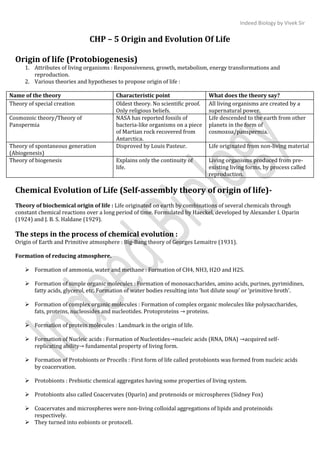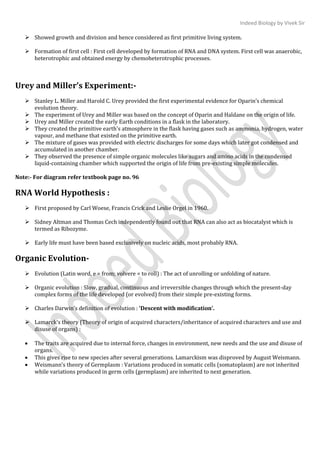The document summarizes the origin of life theories and evolution of life. It discusses theories such as chemical evolution, RNA world hypothesis, Darwin's theory of evolution by natural selection, and the modern synthetic theory of evolution. The key points are:
1) The chemical evolution theory proposes that life originated from combinations of chemicals on the primitive Earth through chemical reactions over time.
2) Urey and Miller's experiment provided evidence for this theory by producing amino acids from gases simulating the early Earth atmosphere.
3) Darwin's theory of evolution by natural selection through variation and inheritance explained the diversity of life and how species evolved over generations.
4) The modern synthetic theory integrated ideas from genetics and mutation theories with natural selection to







